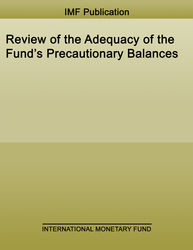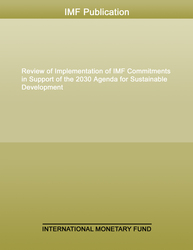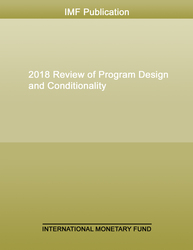
Review of the Adequacy of the Fund’s Precautionary Balances
On March 20, 2024, the IMF’s Executive Board reviewed the adequacy of the Fund’s precautionary balances.
READ MORE...
Volume/Issue:
Volume 2024
Issue 012
Publication date: April 2024
ISBN: 9798400270116
$5.00
Add to Cart by clicking price of the language and format you'd like to purchase
Available Languages and Formats
| English |
Prices in red indicate formats that are not yet available but are forthcoming.
Topics covered in this book
This title contains information about the following subjects.
Click on a subject if you would like to see other titles with the same subjects.
Banks and Banking , Finance , Economics- Macroeconomics , Money and Monetary Policy , Political Economy , Non-concessionary , Lending , Risks , Reserves , Credit , Mitigation , Provisioning , management framework , income risk , concentration risk , Fund credit , I , financial risks , demand scenario , lending portfolio , Credit risk , Income , Capital adequacy requirements , Market risk , Global
Also of interest
Summary
On March 20, 2024, the IMF’s Executive Board reviewed the adequacy of the Fund’s precautionary balances. The review took place somewhat ahead of the standard two-year cycle, in view of the imminent attainment of the current indicative medium-term indicative target of SDR 25 billion for the first time. Precautionary balances comprise the Fund’s general and special reserves. They are a key element of the IMF’s multi-layered framework for managing financial risks. Precautionary balances provide a buffer to protect the Fund against potential losses, resulting from credit, income, and other financial risks. The review was based on the assessment framework established in 2010, which uses an indicative range for precautionary balances, linked to a forward-looking measure of total IMF non-concessional credit, to guide decisions on adjusting the medium-term target over time. While financial risks remain high, they are broadly unchanged from the last review, taking into account the further accumulation of reserves and strengthening of some risk mitigants. Against this background, Executive Directors broadly supported staff’s proposal to retain the current medium-term target of SDR 25 billion and increase the minimum floor from SDR 15 billion to SDR 20 billion. The Board also supported maintaining the biennial review cycle, with earlier reviews if warranted by developments that could materially affect the adequacy of precautionary balances.
Copyright © 2010 - 2025
Powered by:
AIDC



